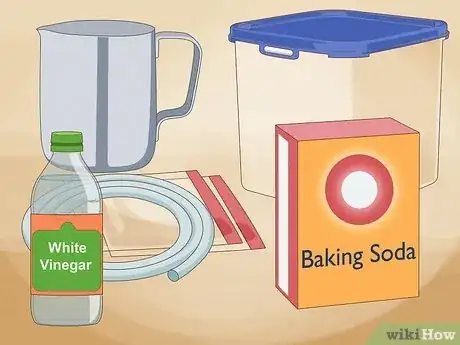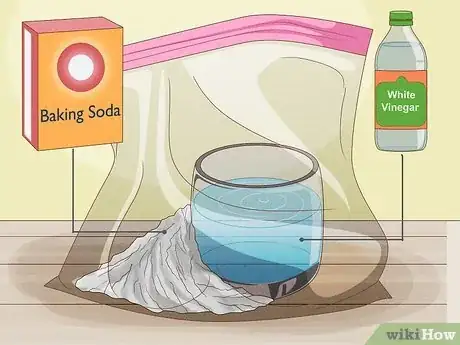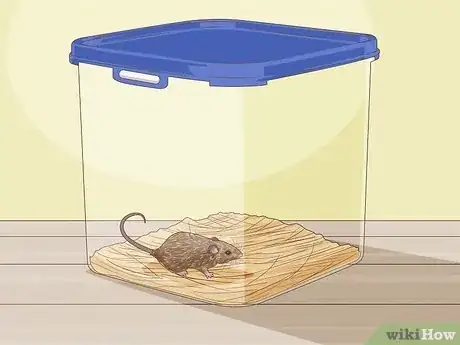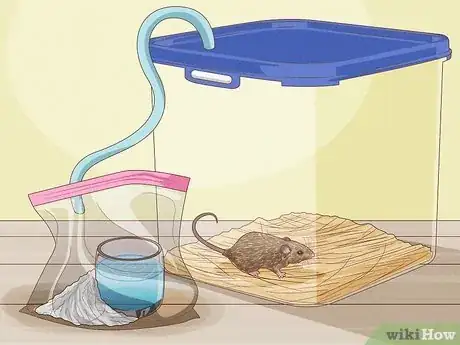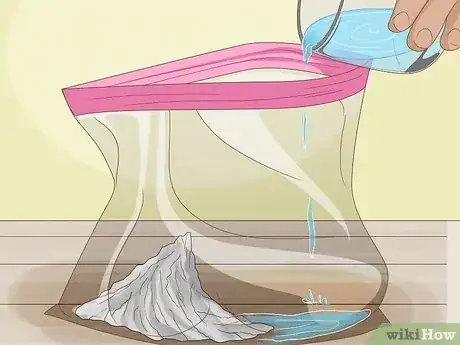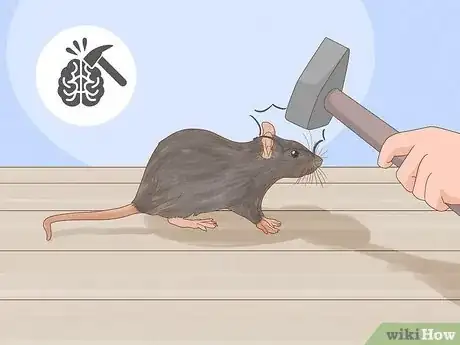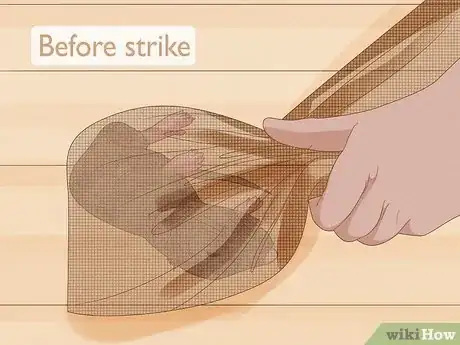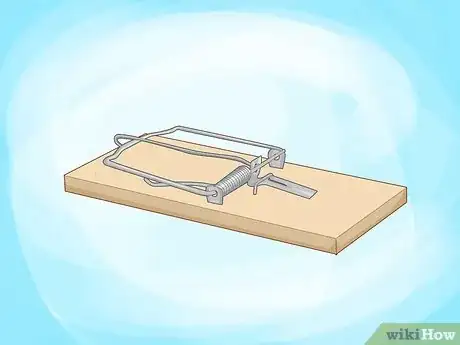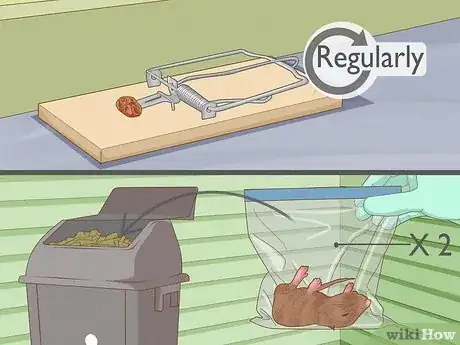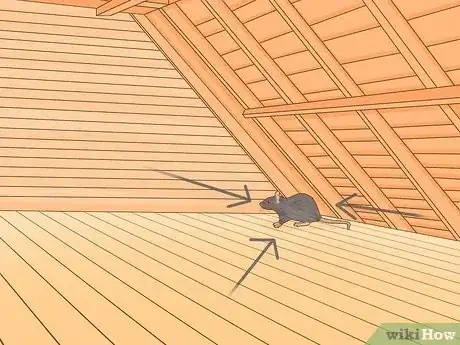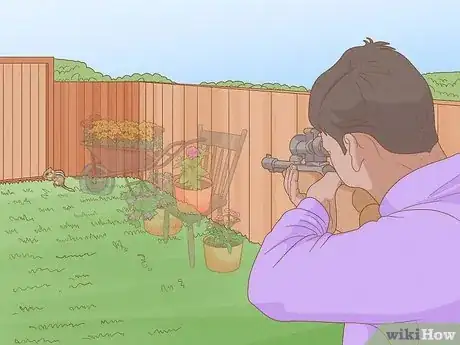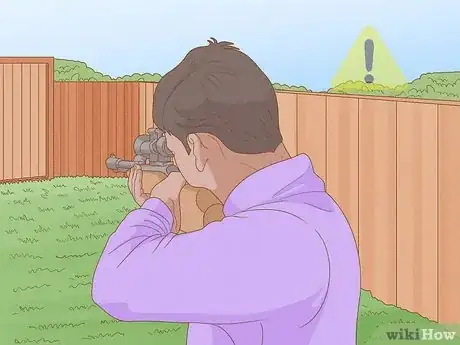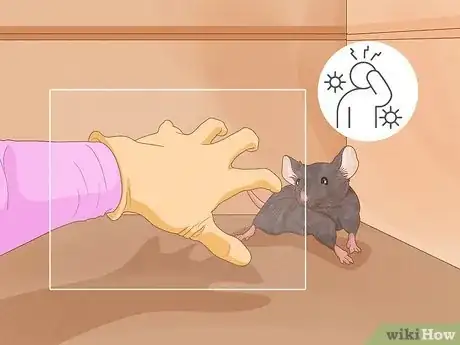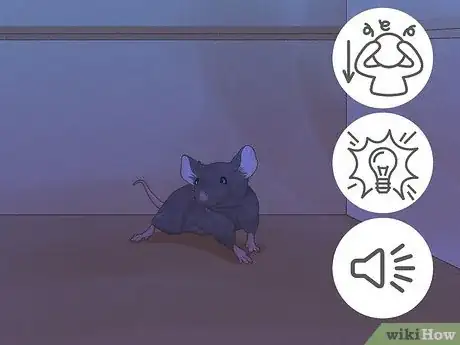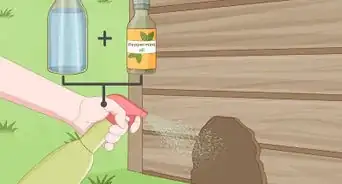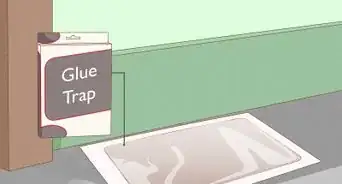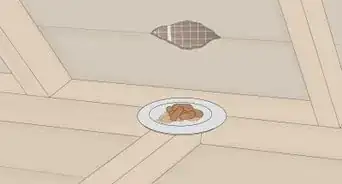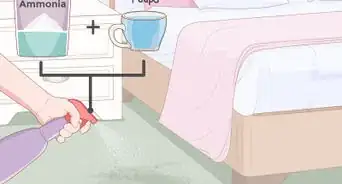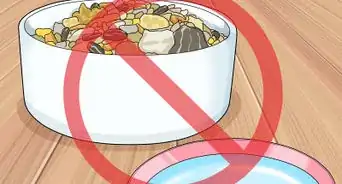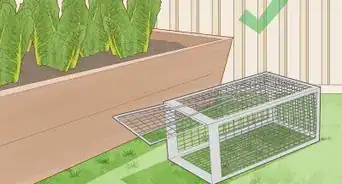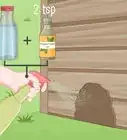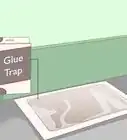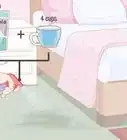This article was co-authored by Chris Parker. Chris Parker is the Founder of Parker Eco Pest Control, a sustainable pest control service in Seattle, Washington. With over seven years of experience, Chris specializes in Integrated Pest Management and doesn’t use any chemicals for pest removal. He offers removal services for ants, rodents, fleas, spiders, wasps, and more. Chris is a certified Commercial Pesticide Applicator in Washington State and received his bachelor’s from the University of Washington.
There are 9 references cited in this article, which can be found at the bottom of the page.
This article has been viewed 686,440 times.
A rodent infestation at home can be a nuisance at best and a health hazard at worst. Killing a rodent can never be entirely humane, but you can take steps to cause as little suffering as possible. There are pertinent questions about legality, so you should check the law in your country or state before proceeding. Definitions of humane and cruel can vary, but there are some general principles to keep in mind. If you have a live rodent to dispose of, consider these humane options. These home methods are always less advisable than taking the animal to your local vet who has the training and experience that you don't.
Things You Should Know
- Use CO2 to asphyxiate the rodent. Though this is the most humane option, it’s also best done by a veterinarian.
- Set up a traditional spring trap or use a small-caliber, low-power gun. Practice all firearm safety measures if you take that route.
- Kill the rodent with blunt force trauma if necessary. Consider your options carefully and avoid direct contact with the rodent to keep yourself safe.
Steps
Using Asphyxiation by CO2
-
1Before you start, prepare your materials. This method involves mixing baking soda with white vinegar to create the gas that will asphyxiate the rodent. As well as the vinegar and baking soda, you will need to prepare a sealable plastic container, a sealable plastic bag, a hose to connect the two, and a separate container to mix the vinegar and baking soda, such as a glass or jug.
- Asphyxiation by CO2 is the only method approved by the American Veterinary Medical Association which uses common household materials. These guidelines are meant for vets not ordinary people, so think about whether you are qualified to carry this out without causing undue pain and suffering for the rodent.[1]
- Fasteners, ties and clothes will be needed to secure the different containers.
- The plastic container is the euthanasia chamber for the rodent
- The plastic bag is the CO2 chamber where the gas is produced.
-
2Prepare the CO2 chamber. Put the baking soda into the bottom of the bag, and then place the separate container with the vinegar into the bag, without spilling it. When you combine the baking soda and vinegar later, the reaction produces the gas carbon dioxide (CO2), which the rodent can't breathe.Advertisement
-
3Prepare the euthanasia chamber. Taking care when you handle the rodent, place it into the airtight plastic container. Tupperware containers work well. Adding some nesting material can make it a little more comfortable and perhaps put the rodent somewhat more at ease.
-
4Connect the two with the hose. Affix the hose to the top of the bag, and secure it with a rubber band or tie and then put the other end in the plastic container with the rodent. Use a cloth or towel to block of the area around where the hose enters the container to make it airtight.
-
5Slowly pour the vinegar over the baking soda. Once it is all secured you should begin carefully pouring the white vinegar over the baking soda, to create the CO2 which will then travel through the short hose to the plastic container. Pour around half of the vinegar, and then observe the rodent. The rodent should quickly pass out and die. Once it becomes unresponsive, pour the rest of vinegar over.
- Carbon dioxide exposure that uses a gradual fill method like this is less likely to cause pain.[4]
Killing it with Blunt Force Trauma to the Head
-
1Know your goal. The aim of this method is to destroy the rodent's brain with one swift, powerful blow to the head from a hammer or other blunt striking object. This can be very daunting and/or emotionally taxing..[5]
-
2If you proceed, ensure that the rodent cannot move. You also want to be sure you have a clear shot when you strike. One useful method is to confine the rodent in one corner of a sturdy sack or bag before striking.
Using Spring Traps
-
1Get some sturdy and re-usable spring traps. When designed and set-up when these traps make a quick death more likely.[6]
-
2Set-up a traditional spring trap. To set-up a trap like this, place bait within the specified area, ensuring that the rest of the trap is clean. Doing this will make it more likely that, when tripped, the trap will close fully. Then, place the trap at right angles to a wall with the bait nearest the wall.[7]
- The rodent should have a clear path to the trap.
- The bait should be changed regularly.
-
3Check it regularly. You should check the traps every morning, and be prepared to dispose of any dead rodents straight-away. Carefully remove them from the trap, place in a plastic bag, and then place that bag in a second bag, and throw it away into a secured bin. Always use gloves when you are doing this, and you can use a household disinfectant to clean the trap.[8]
Firing a Projectile
-
1Use a small-calibre, low power gun or air rifle. More powerful guns carry the risk of ricocheting or shooting through the rodent. They may also spread biological material further than smaller guns, causing a bigger mess and a greater health hazard. Low power air guns (12fpe), that are .177 calibre are considered the most appropriate.
-
2Be sure you have a clear sight of the rodent. A rodent running free is very difficult to catch, but they are easier to corner. If they are cornered, sitting still in a crevice, shooting it with an air-powered BB gun can be an effective and quick way to kill the rodent.[9]
- This is only envisaged in an emergency situation. Most of the time setting traps in the normal way is preferable to shooting a rodent.[10]
-
3Ensure the shooting environment is safe. If you do decide that shooting the rodent is a good option, ensure that the environment is safe. If the projectile passes through the rodent's head, it may hit people or objects in its path. Make sure the area is free of obstructions before firing.
-
4Shoot the rodent in the head. A shot to the head should kill the rodent instantly.
- Even a clean shot will be bloody and distressing.
-
5Observe all firearm safety measures. When mishandled, guns can be deadly. This is true for air guns too. An air rifle or pistol should never be aimed at another person. If you are unsure how to safely operate a gun, use another method to kill the rodent.
- You should familiarise yourself with local laws before thinking about shooting a rodent.
Thinking about your Options before Proceeding
-
1Protect yourself. Rodents, however small, are wild animals. They may bite if threatened. Additionally, they can transmit a variety of diseases[11] . Wear tough gloves and long sleeves if you must touch them, but you should try to avoid this as much as is possible by using a sealable bag to contain the rodent.
-
2Attempt to stress the rodent as little as possible. Agitating the rodent can cause it struggle, flee, or fight. Minimize unnecessary stimulation - handle the rodent gently, don't shine bright lights at it, and don't make loud noises[12] .
Our Most Loved Articles & Quizzes
Community Q&A
-
QuestionWould cutting off its head be considered humane?
 Community AnswerIf you could cut the head off quickly without alerting the rodent first, then it could be considered humane, but it's certainly not the best option.
Community AnswerIf you could cut the head off quickly without alerting the rodent first, then it could be considered humane, but it's certainly not the best option. -
QuestionWould it be humane if I just left it out in the sun or drown it with hot water?
 Community AnswerLeaving it in the sun causes heatstroke, which is very slow and painful. Hot water drowning is even more painful than drowning in lukewarm water, which is already considered inhumane. In short, neither choice is humane.
Community AnswerLeaving it in the sun causes heatstroke, which is very slow and painful. Hot water drowning is even more painful than drowning in lukewarm water, which is already considered inhumane. In short, neither choice is humane. -
QuestionWhat do I do if the rat bites me?
 Community AnswerGet it checked out ASAP. Rats carry deadly pathogens and diseases than can make you very sick.
Community AnswerGet it checked out ASAP. Rats carry deadly pathogens and diseases than can make you very sick.
Warnings
- Certain methods may be illegal where you live. Check local animal cruelty laws if you are unsure.⧼thumbs_response⧽
- If you are bitten or scratched, contact a medical centre immediately.⧼thumbs_response⧽
- Handling rodents are dangerous and can expose you to harmful diseases. Be sure to proceed with caution and to take all available safety measures. Wash any area of your body that touches a rodent.⧼thumbs_response⧽
References
- ↑ https://www.avma.org/KB/Policies/Pages/Euthanasia-Guidelines.aspx
- ↑ http://www.alysion.org/euthanasia/index.php
- ↑ http://www.ratfanclub.org/euth.html
- ↑ https://www.avma.org/KB/Policies/Documents/euthanasia.pdf
- ↑ http://www.ufaw.org.uk/rodent-welfare/rodent-welfare
- ↑ http://kb.rspca.org.au/what-is-the-most-humane-way-to-kill-pest-rats-and-mice_139.html
- ↑ http://kb.rspca.org.au/what-is-the-most-humane-way-to-kill-pest-rats-and-mice_139.html
- ↑ http://www.doyourownpestcontrol.com/mice-disease-damage.htm#disposal
- ↑ http://www.wildlife-removal.com/killrat.html
About This Article
To humanely kill a rodent by asphyxiation, you’ll need baking soda, white vinegar, a hose, a sealable plastic container, and a plastic bag. Once you’ve trapped the rodent in the plastic container, pour a few cups of baking soda into your plastic bag. Then, place a jug of white vinegar into the bag without mixing it with the baking soda. Cut a hole in the lid of the plastic container and attach the hose to it. Place the other end in the plastic bag and seal it with a rubber band. After you’ve connected the hose to the bag, slowly pour the vinegar onto the baking soda, which will make carbon dioxide and suffocate the rodent. If you don’t have access to these materials, the best way to instantly kill a rodent is to hit it hard in the head. For more tips, including how to kill a rodent with a spring trap, read on.
